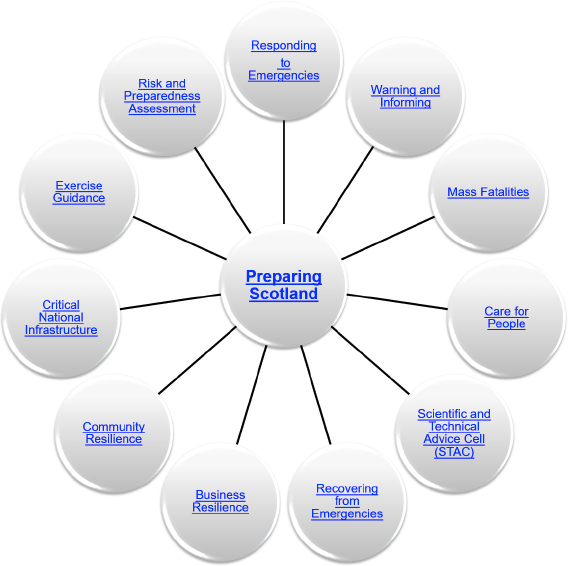Resilience
We live in a complex and increasingly interdependent society. Whilst this brings many benefits, it also leaves us, potentially, more vulnerable to a number of challenges. These challenges take many forms, both new and old. Our vulnerabilities around power supply and information technology are relatively new, whilst others, such as pandemic disease and severe weather incidents, have been with us for centuries.
Maintaining the continuity of our way of life or returning to relative normality after any emergency, major incident or large-scale planned event requires resilience. Resilience is defined as “the capacity of an individual, community or system to adapt in order to sustain an acceptable level of function, structure and identity”1.
In this context “system” includes the broader infrastructures, networks and processes which sustain society. The supply of fuel, for instance, relies on a complex web of relationships, including supply of raw material, transport infrastructure, availability of staff and the means of electronic payment. A failure in any one of these could affect supply as a whole.
“Community” refers not only to geographical communities (such as urban or coastal) but also communities of interest, where people are brought together through common interests and a shared sense of commitment. Communities of practitioners exist too, whereby those engaged in many aspects of public service or commercial activity are drawn together by the common goal of preparing for, responding to and recovering from emergencies.
“Individual” refers to the man or woman in the street, the people of Scotland, who also bear a responsibility to consider how best to prepare themselves for unforeseen or challenging events and how they might assist those around them during emergencies.
In all of this, a robust civil contingencies planning process is a key factor in establishing resilience.
1 Charles Edwards; Resilient Nation; Demos; 2009
Purpose of Guidance
Preparing Scotland is not intended to be an operations manual, but is instead guidance to responders assisting them assess, plan, respond and recover. It establishes good practice based on professional expertise, legislation and lessons learned from planning for and dealing with major emergencies at all levels. It reflects a process which prepares for emergencies from the identification of a risk to the completion of the recovery process.
It is intended to be a flexible and responsive document, able to respond to new hazards and threats. The guidance is designed to be able to integrate new practices established through innovative thinking or the incorporation of lessons learned. It encourages training and development of those involved and lays out structures to assist in this. Whilst some development is in response to legislative duties, other programmes will be in response to stakeholder requirements.
Preparing Scotland - The “Hub and Spokes” Model
Preparing Scotland (PS) guidance is set out as a “Hub and Spokes”, in which the
Hub (this document) incorporates:
- the philosophy of resilience in Scotland
- the principles that underpin effective Integrated Emergency Management (IEM)
- regulatory guidance and recommended good practice
- clear signposting to the detailed “Spokes”.
The spokes provide detailed guidance on specific matters, covering:
As well as in the table above, hyperlinks to these documents are included at relevant points throughout the Hub. Additionally, the Hub provides references to further information for the benefit of the reader, generally via references to written material or hyperlinks.
As with all guidance, the Spokes (and the Hub) will be subject to periodic revision. A version control process is in place to ensure that only the most current guidance is available on-line. It is the responsibility of the user to ensure that they are using the current version, which can be found at Ready Scotland: Preparing Scotland.
Any user of the guidance who wishes consideration to be given to changes is encouraged to contact Julie Tarbet.
PREPARING SCOTLAND "Hub and Spokes" Model



